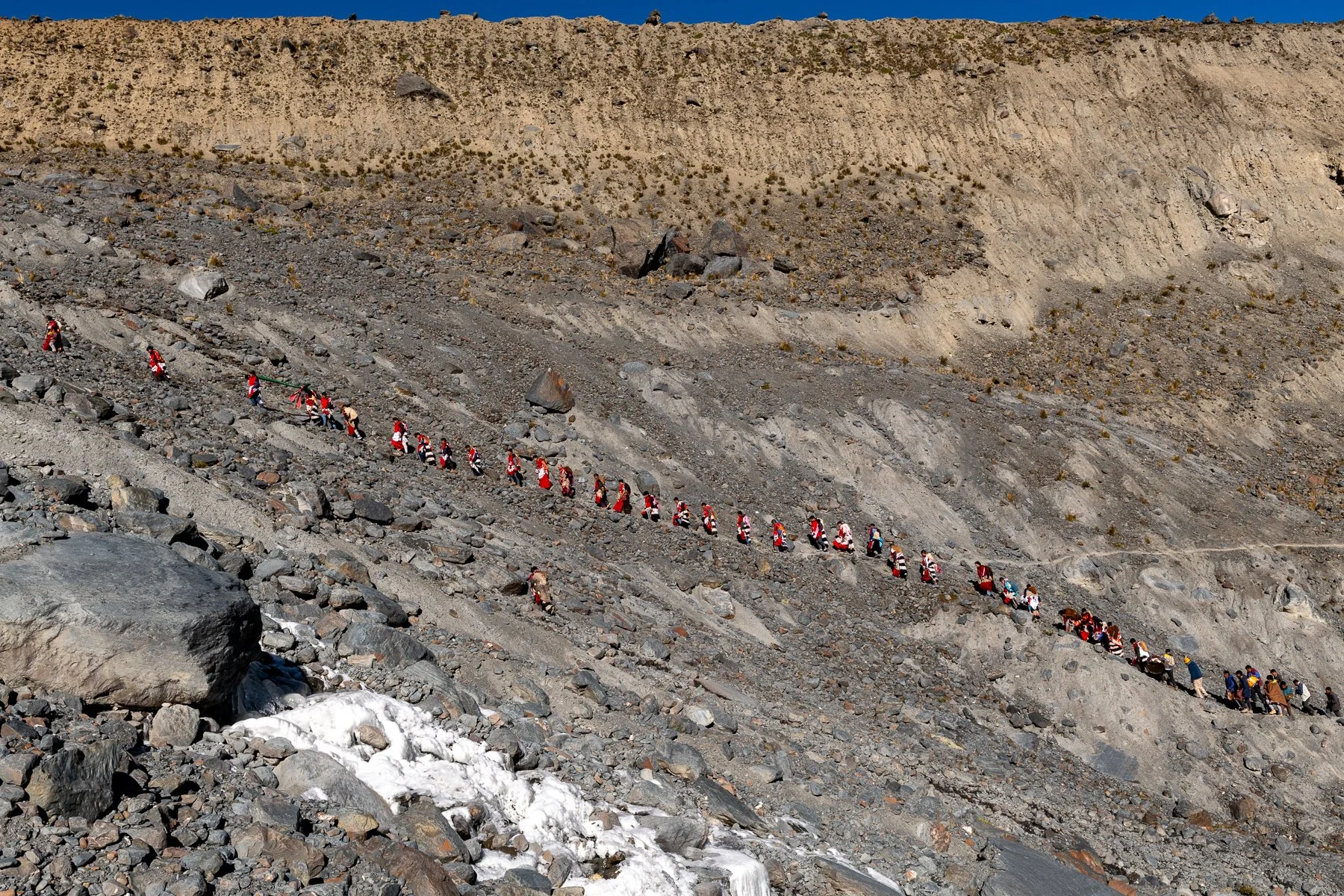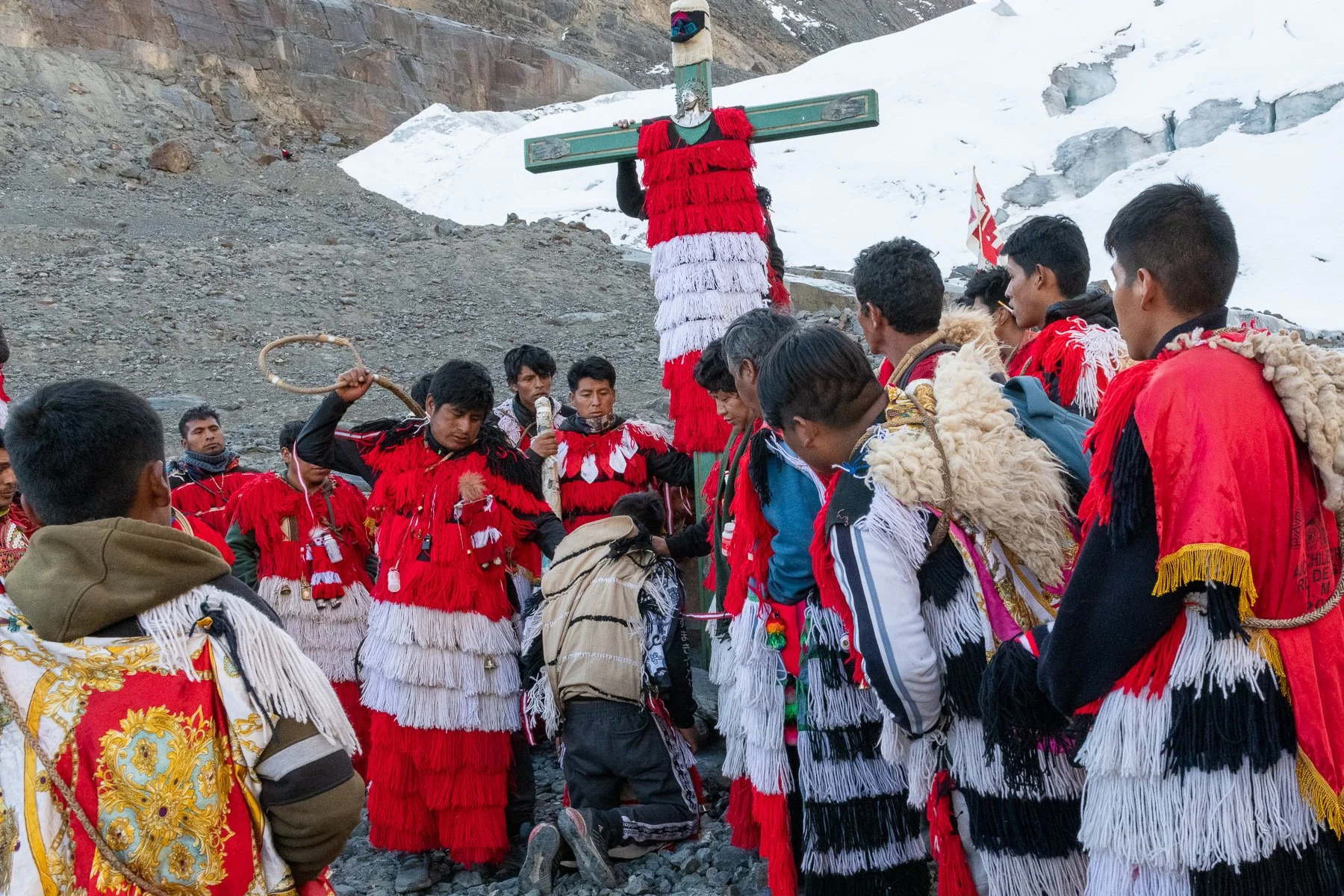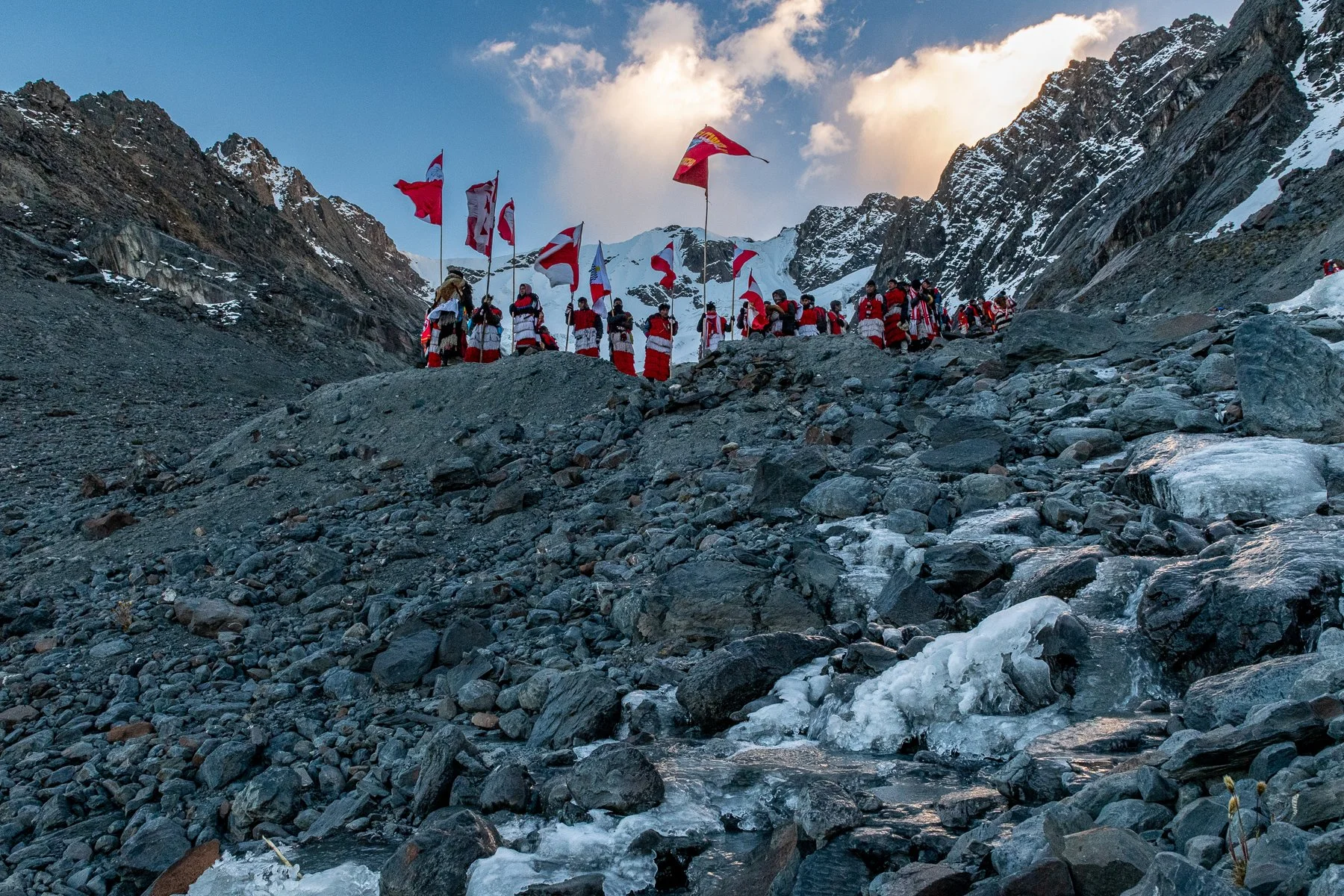Qoyllur Rit’i - Part 4
Hello friends and welcome back to part four of the Qoyllur Rit’i pilgrimage.
After that morning of watching the Comparsas (dancers) perform on the mountainside and throughout the valley, I joined the Ukukus as they prepared for their processional ceremony.
The Ukukus, also known as Pabluchas or Pablitos, are based upon a character from Andean folklore that is half bear and half man. They are dressed in shaggy wool tunics, often wear balaclava-like masks, and carry a whip. They maintain order at the festival and enforce the rules to protect and honor both modern and ancient deities.
The procession begins with all the Ukukus gathering in the church where several large wooden crosses are blessed. Prayers are made before a boulder with a painting of Jesus on the cross where the spirit of Señor Qoyllur Rit’i resides.
The story of Señor Qoyllur Rit'i is one that the church created to make the festival Christian. I won’t go into the account here as it is complicated and rather elaborate. However, the crux of the festival lies in its true origins and is evident in the name.
Qoyllur Rit’i is roughly translated from Quechua as “Snow Star” or “Shining Snow”. The people of the Andes have been coming before the glacier for over five hundred years (most likely much longer than that) to pray to the mountain and celestial spirits.
After the crosses have been blessed and prayers are made, the Ukukus carry the crosses from the church and begin their procession through the crowds lining the pathways and up the mountain.
There are several groups of Ukukus that wear different colored tunics. Each group hoists its cross upon its shoulders and packs it up to different locations on the mountainside.
The group I was invited to join are dressed in red tunics. They are an important group that carries their cross to the highest point at the Sinkara glacier. The elevation at this point is approximately 5000 m (16,400 ft) and the climbing is difficult due to the lack of oxygen. The Ukukus take turns carrying the cross, but their strength, agility, and stamina are astounding.
Once they arrive at the glacier the cross is planted and prayers are given to the Apus (the mountain spirits). In the past, the Ukukus would break off pieces of the glacier and bring them down as it is considered healing and sacred.
The water from Sinkara and other glaciers of the Andes are the life source for the people of the region. Due to climate change, the glaciers are dramatically receding. As a result, taking pieces of the glacier is now forbidden and punishable by whipping by the Ukukus.
Whippings are also administered to those that have committed offenses throughout the year, like cheating on a wife or stealing, etc. Luckily they were unaware of my list of transgressions.
Once the floggings and prayers were completed, the group descended back down into the valley before the sunset. The Ukukus would recuperate with food and rest before making the ascent again in the dark of night.
There are so many photos and experiences from this pilgrimage that I wanted to share with you, that I had to break it down into multiple parts. The final part will be that last ascent in the night which includes some of my favourite photos from the journey. It will arrive in your inbox in a few days.
Happy Canada Day to those of you back home in Canada. Have a great weekend everyone and keep an eye out for the final excerpt of the Qoyllur Rit’i pilgrimage.
Salud!
MB









